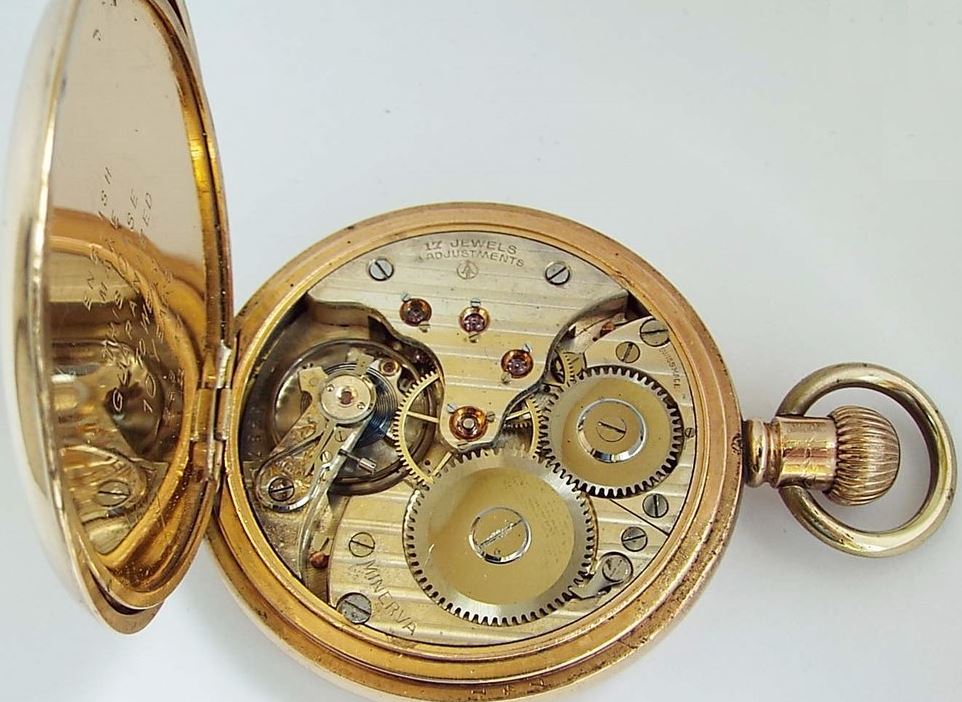This post stems from the recent Minerva pocket watch post. I must admit that before I started looking at this particular antique hunter watch I had never heard of Robert Frères Villeret or Minerva before. So, it came as a surprise to find out how influential the company was and, in a way, still is today. These posts might appear frequently, but there is usually a week or so of research that goes into each of the posts and the subsequent pages that spawn from them.
Origin
Robert Frères Villeret’s watchmaking heritage was born in 1858 in the village of Villeret, in the Swiss canton of Bern. Two brothers Charles and Hyppolite Robert founded the company “H. & C. Robert”. This later became just “C. Robert” when only Charles remained. I’m not sure if Hyppolite died or the brothers just had a falling out. The name changed again to “Robert Frères Villeret” in 1878 when Charles’ sons, Charles and Georges, took over the leadership of the company. They were later joined by Yvan Robert (1840-1912). The word ‘Frères’ in French means brothers. So, the company essentially was the Robert Brothers of Villeret.
Establisseur
In Switzerland, etablisseur is a French term for a watchmaker who buys ébauches and components and then assembles them into complete watches. Initially, Robert Frères Villeret operated as an “etablisseur” of pocket watches using movements purchased from other suppliers. Robert Frères Villeret took part in the “Expositions universelles” in Antwerp and 1889 at the Paris World Exhibition winning medals for their watches at both exhibitions. I have been unable to find exactly what the medals were awarded for.
Brands
The company began registering their own brands in 1886. The first was “Mercure”, then “Minerva” (the goddess of farming, craftsmanship and science) in 1887, and “Ariana”, “Tropic”, and others in 1898. Each had its own logo and product range. These brands were associated with the “RFV” logo characterized by an arrow, a hallmark that became a signature of the brand.

In 1895 Robert Frères Villeret began production of its own watch movements. The first was the 18-ligne No. 1 movement with a cylinder escapement which surprisingly remained in production until 1941. The next movement was the No. 2 calibre 18- or 19-ligne movement with a Swiss lever escapement. RFV had a specific naming convention for their calibres, referring to them by their size, in ligne, and sequence number. Therefore all calibres sized around 18 ligne would be called “Calibre 18” followed by a number. So its first calibre was officially known as Calibre 18-1. The third, introduced in 1903, was Calibre 19-3 and became known for its superior finish.
Chronographs
In 1908 Robert Frères Villeret started producing chronographs and stopwatches and introduced their first chronograph movement, the Calibre 19-9. As per most Minerva chronographs, it did not feature a chronograph hour-counter, but only the minute-counter. Using the trademark Minerva, positioned at the top of the company’s range of brands, Robert Frères Villeret gained worldwide acknowledgement for its precise chronographs and became a leading specialist in the production of professional watches. Able to measure time accurately to 1/100th of a second in 1916, its mechanical stopwatches were fundamental to the evolution of modern-day motor racing.
Minerva
The Minerva brand was probably their most successful because they later renamed the company to “Minerva SA, Villeret” in 1929. The company endured over the coming decades and survived several financial crises. In October 2006, the Swiss luxury goods group Richemont bought the Fabrique d’Horlogerie Minerva SA, securing their exceptional knowledge of chronographs and stopwatches. The company continues to produce watches of high quality for luxury goods manufacturer, Montblanc.
Read about other Manufacturers and Makers.